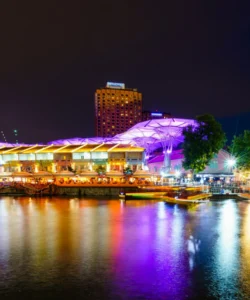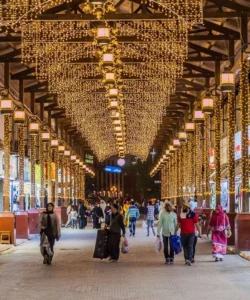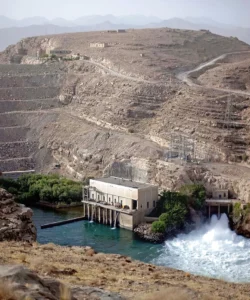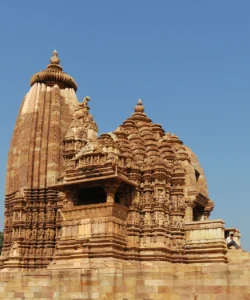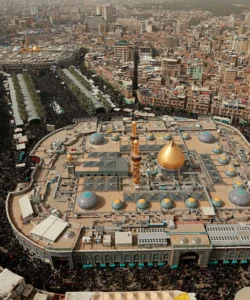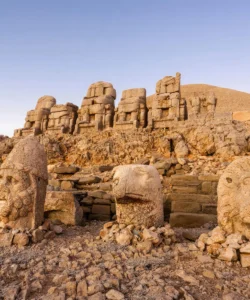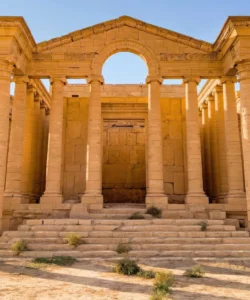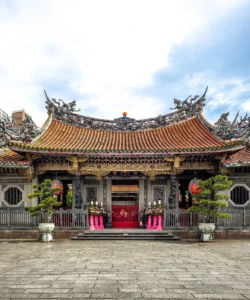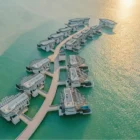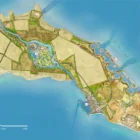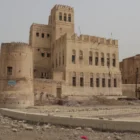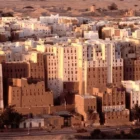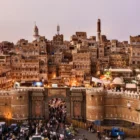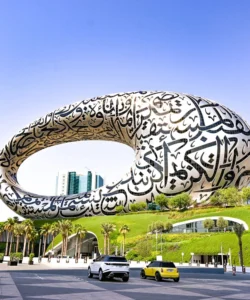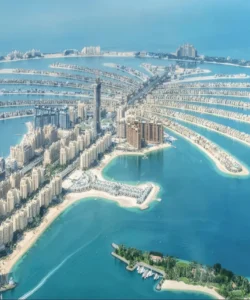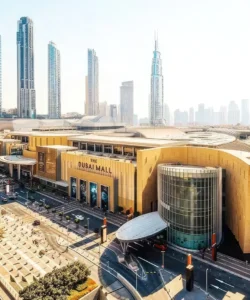The Museum of the Future (MOTF) is an iconic and visionary landmark located in Dubai, United Arab Emirates. Opened in February 2022, it’s not a museum in the traditional sense, but rather a “living museum” dedicated to exploring the future of science, technology, and innovation, housed within one of the world’s most architecturally complex and beautiful buildings.
Listen to an introduction about Museum of the Future
Name and Address
- Name: Museum of the Future (Arabic: متحف المستقبل)
- Address: Financial District, Sheikh Zayed Road, Dubai, UAE.
- Location: Prominently situated adjacent to the Emirates Towers, along Dubai’s main superhighway, Sheikh Zayed Road.
How to Get There
The Museum of the Future is easily accessible given its prime location.
- By Metro: The most recommended way is via the Dubai Metro Red Line. Get off at the Emirates Towers Station, which is directly connected to the museum by a covered walkway. This is convenient from Dubai International Airport (DXB) as well.
- By Bus: Several bus routes (e.g., 27, 29, X22) have stops at Emirates Towers, a short walk from the museum.
- By Taxi/Rideshare: Taxis and ride-sharing services like Uber and Careem are readily available throughout Dubai and offer direct transportation to the museum.
- By Car: You can drive to the museum, and there is paid self-parking available on-site, though spaces can be limited. Valet parking is also an option.
- Visitor Access: The Museum of the Future is open to the public daily, typically from 9:30 AM to 9:00 PM, with the last admission around 7:00 PM. It is highly recommended to book tickets in advance online due to its popularity, as time slots can sell out quickly, especially during peak hours or weekends. Children under four and people of determination (with one carer) can usually enter for free.
Landscape and Architecture
The Museum of the Future’s architecture is a marvel of design and engineering, often hailed as one of the most beautiful buildings in the world.
- Unique Torus Shape: The building’s distinctive asymmetric torus shape with an elliptical void in its center is highly symbolic. The green hill it sits upon represents the Earth, the gleaming solid structure represents humanity and its knowledge, and the void symbolizes the unknown future that humanity is yet to discover.
- Arabic Calligraphy Facade: The stainless steel facade is adorned with intricate Arabic calligraphy, which are actually three quotes about the future by His Highness Sheikh Mohammed bin Rashid Al Maktoum, the ruler of Dubai. These calligraphic panels also serve as windows, allowing natural sunlight to filter into the interiors during the day and creating a stunning illuminated effect at night with LED lights.
- Pillar-less Structure: A remarkable engineering feat, the museum was constructed without any internal support columns. Its framework uses a complex diagrid structure of 2,400 diagonally intersecting steel beams.
- Sustainability: The building is LEED Platinum certified, reflecting its commitment to sustainable design. It incorporates features like solar power (from its own solar park), regenerative drive lifts, greywater recycling systems, and smart irrigation for its surrounding gardens.
- Interior Experience: The museum features seven floors, each designed as an expansive, interactive movie set, brought to life by expert storytellers, technologists, and artists. The themes include:
- OSS Hope (Orbital Space Station): Life in space in 2071, exploring future space travel.
- The HEAL Institute: Focuses on ecology and biodiversity, showcasing ways to repair and restore life on Earth, including a “DNA Library” of species.
- Al Waha (The Oasis): Offers soothing experiences and therapies to connect with senses and promote well-being.
- Tomorrow Today: Showcases near-future technologies addressing global challenges in health, water, food, transportation, and energy.
- Future Heroes: An interactive play-space designed to inspire children aged 3-10 through missions and games.
- Viewing Deck: A viewing deck on level two provides an up-close experience of the facade’s smooth inner shell and panoramic vistas of Dubai’s urban center.
What Makes It Famous
The Museum of the Future’s fame is global, stemming from its revolutionary concept and iconic design:
- “Most Beautiful Building on Earth”: It has been widely praised and recognized by publications like National Geographic for its stunning and unique architecture.
- Future-Focused Concept: Unlike traditional museums, it’s dedicated to exploring and shaping the future, acting as an incubator for ideas and innovations in science and technology.
- Architectural Icon: Its distinctive torus shape, pillar-less design, and calligraphic facade make it an instantly recognizable and highly photogenic landmark.
- Interactive and Immersive Experience: The museum offers a highly engaging and interactive journey into potential futures, utilizing advanced technologies like AR, VR, and robotics.
- Sustainability Pioneer: Its LEED Platinum certification and integrated sustainable design elements highlight Dubai’s commitment to a green future.
- Global Intellectual Hub: It serves as the headquarters for initiatives like “Great Arab Minds,” aiming to identify and support exceptional Arab talents across various fields.
Differences from Some Other Landmarks
The Museum of the Future distinguishes itself from other landmarks in several key ways:
- Future vs. Past/Present: While landmarks like Bahrain National Museum or Bahrain Fort focus on historical narratives and archaeological findings, and structures like Burj Khalifa or Al Hamra Tower represent current architectural prowess, the Museum of the Future is uniquely dedicated to looking forward, exploring potential futures and fostering innovation.
- Experiential and Interactive: Unlike observation decks (like Burj Khalifa’s “At the Top”) or traditional shopping/business hubs (like The Dubai Mall or Bahrain World Trade Center), MOTF offers a deeply immersive and interactive journey where visitors actively engage with future concepts and technologies, rather than just observing.
- Symbolic Architecture: While many buildings are aesthetically pleasing, MOTF’s design carries profound symbolic meaning (the Earth, humanity, the unknown future), which is integral to its purpose, setting it apart from purely functional or commercially driven structures.
- “Living Museum” Concept: Its ability to iteratively change its exhibitions and attractions based on new discoveries and ideas makes it a “living museum,” a dynamic entity that continuously evolves, unlike static historical sites.
Museum of the Future Photos:































